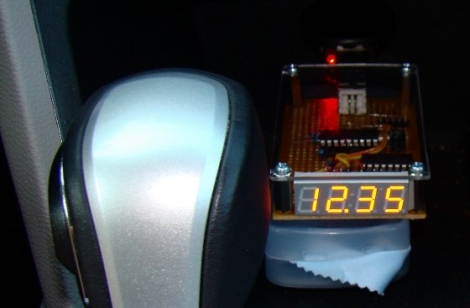
[Rajendra’s] car had just about all the bells, whistles, and gauges he could dream of, but he thought it was missing one important item. In an age where cars are heavily reliant on intricate electrical systems, he felt that he should have some way of monitoring the car’s battery and charging system.
To keep tabs on his car’s electrical system, he built a simple device that allows him to monitor the battery’s instantaneous voltage when the car is powered off, as well as the charging voltage across the battery when the car is running. A PIC16F1827 runs the show, using a simple voltage divider network to step the input voltage down to an acceptable level for use with the PIC’s A/D conversion channel. The resultant measurements are output to a four digit 7 segment display, mounted on the front of the device.
He says that the voltage monitor works quite well, and we’re sure he feels a lot better about the health of his car’s charging system. For anyone interested in keeping closer tabs on their car, he has a circuit diagram as well as code available on his site.












